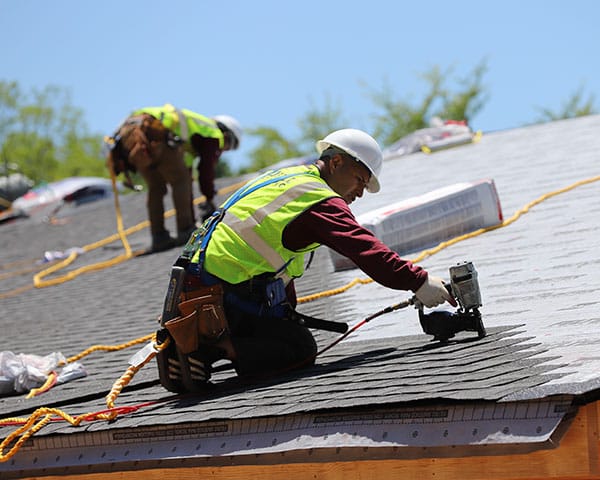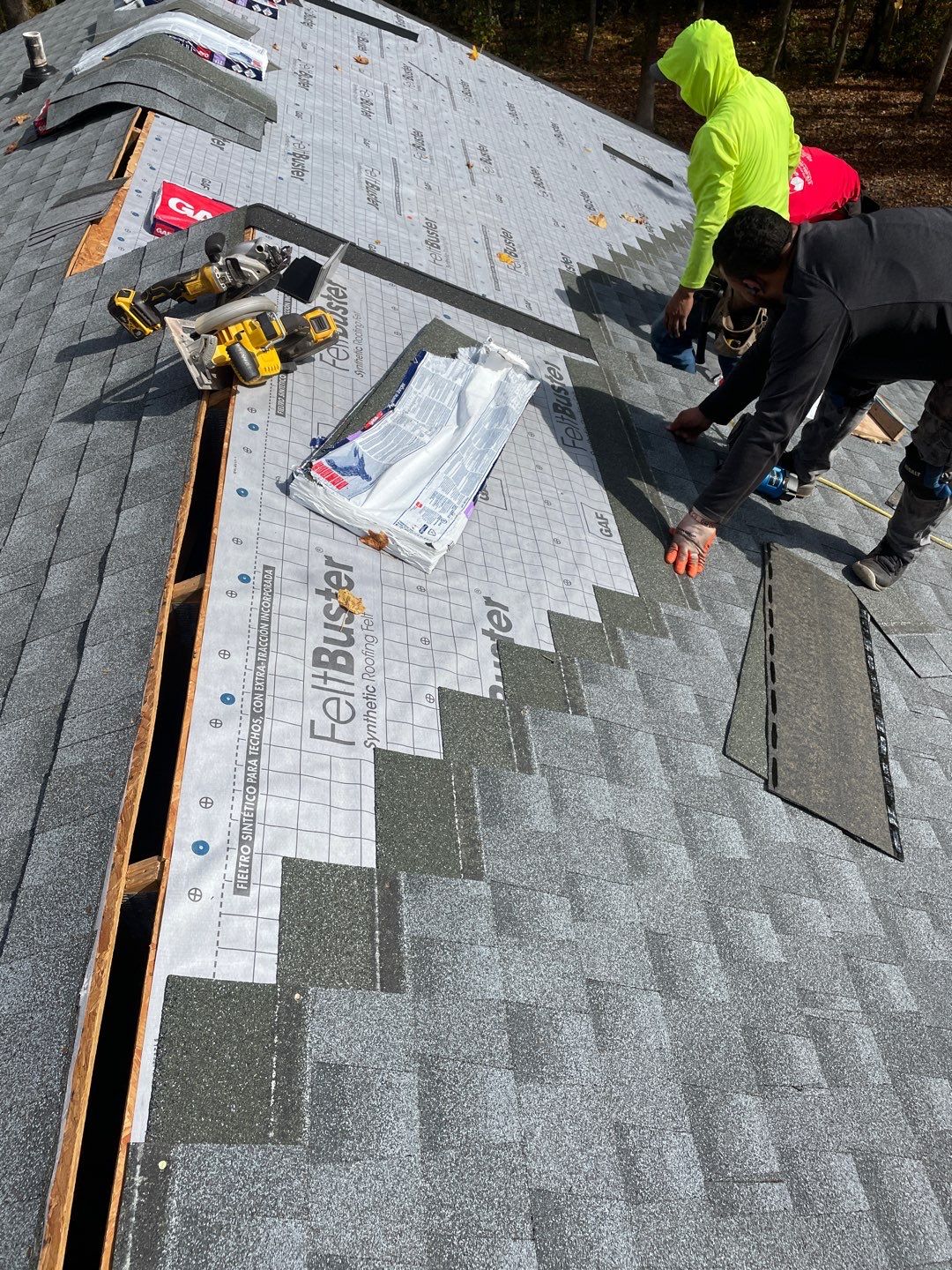Neighborhood Insights on Roofing Companies Gainesville Florida Homeowners Prefer
Neighborhood Insights on Roofing Companies Gainesville Florida Homeowners Prefer
Blog Article
Best Practices for Ensuring Appropriate Roofing Ventilation
A well balanced intake and exhaust air vent proportion, generally 1:300, plays a crucial role, with intake vents preferably placed at the lower side of the roof covering for amazing air entrance and exhaust vents at the peak for warm air leave. Maintaining insulation away from vents is essential to stop air movement limitation.
Understand Air Flow Basics
Correctly comprehending ventilation fundamentals is crucial for guaranteeing the durability and performance of roof. Effective ventilation minimizes moisture accumulation and temperature extremes in the attic room, both of which can bring about significant architectural damages in time. A well-ventilated roofing aids in preventing common problems such as mold and mildew growth, timber rot, and ice dams, which can endanger the stability of the roofing materials and the underlying frameworks.
The primary objective of ventilation is to promote the activity of air, enabling a consistent exchange in between the exterior and indoor atmospheres. This equilibrium is accomplished via a mix of consumption and exhaust vents that interact to maintain optimum air flow. Consumption vents, typically situated along the soffits or eaves, permit fresh air to get in the attic area, while exhaust vents, frequently situated at or near the roofing system ridge, enable warm, damp air to leave.
Secret variables affecting the performance of roofing ventilation consist of proper positioning, appropriate sizing, and guaranteeing that both consumption and exhaust vents are unobstructed. Regular evaluation and upkeep are vital to determine possible clogs, damages, or ineffectiveness in the air flow system, therefore protecting the roof's performance and resilience.
Sorts Of Roofing System Vents
Roofing system vents play an essential duty in maintaining effective attic air flow and, by expansion, the general wellness of the roofing system. Numerous kinds of roof vents are offered, each with special advantages tailored to particular roof covering needs.

Soffit vents are installed under the eaves and operate in tandem with roof vents to ensure a balanced consumption and exhaust system. By allowing cooler air to get in from below, soffit vents promote the expulsion of hot air through top vents. Gable vents, situated on the exterior walls of the attic, deal another efficient remedy, specifically in homes with saddleback roofs.
Evaluate Your Present Ventilation

Following, think about the age and condition of your roof covering products and air flow parts. Older systems might not abide by existing building regulations or might have degraded websites gradually, reducing their performance. Conduct a detailed assessment to recognize any indicators of damage, such as rust, damage, or gaps that can jeopardize the system's performance.
Furthermore, determine the attic temperature level and moisture levels. Heats and moisture can indicate poor air flow - roofing companies in gainesville florida. Use a hygrometer and thermometer to obtain exact readings, contrasting them with outside conditions. Relentless inconsistencies suggest potential concerns that require attending to.
Installation Best Practices
Efficient installment of roof covering air flow systems is extremely important for making certain optimum efficiency and long life. Proper installment starts with recognizing the particular ventilation demands of the roofing system and the building it covers. This entails calculating the correct proportion of consumption to wear down vents, usually adhering to the 1:300 rule, which specifies one square foot of air flow for each 300 square feet of attic floor area.

Consumption vents need to be installed at see here the roof's reduced side, frequently in the soffits, to allow great air to go into. Exhaust vents, on the various other hand, must be mounted near or at the roofing system's peak to promote the exit of warm, damp air.
Seal all air vent connections thoroughly to stop air leaks and potential water infiltration. Use premium materials and follow maker standards to ensure resilience and efficiency. In addition, integrating ridge vents with baffles can considerably boost airflow efficiency by stopping wind-driven rainfall and snow from entering the attic.
Inevitably, accurate installation of roofing ventilation systems mitigates possible problems such as mold growth, ice dams, and structural damages, making sure the roofing's stability and the building's total health.
Regular Maintenance Tips
Consistency in upkeep practices is basic to ensuring the lasting effectiveness of roofing air flow systems. During these examinations, make sure that vents are cost-free of debris, nests, and other blockages that might hinder air flow.
Cleaning the vents is another necessary job. Utilize a soft brush or a vacuum cleaner to eliminate dirt and particles from intake and exhaust vents. Beware not to damage the air vent displays or louvers throughout the process. In addition, evaluate the attic room for any kind of signs of water damage, which might compromise the stability of the roof.
Proper insulation is similarly crucial. Ensure that attic insulation does not obstruct the vents, as this can seriously restrict air flow. If any kind of insulation has actually changed or cleared up, rearrange or replace it to maintain an efficient barrier.
Last but not least, replace any damaged or missing out on components immediately. Damaged vents, fractured roof shingles, or tatty flashing can all add to poor air flow and needs to be addressed without delay. Normal upkeep makes certain that the roofing air flow system works ideally, thus extending the lifespan of the roofing itself.
Final Thought
Guaranteeing proper roof air flow is critical for maintaining the performance useful link and durability of a roofing system. Adherence to the 1:300 intake and exhaust vent proportion, paired with the strategic positioning of vents, is necessary. Routine semiannual evaluations, debris cleansing, and ensuring insulation does not block airflow are critical techniques. Executing these best practices will cultivate a well-ventilated roofing system, therefore minimizing possible problems connected to moisture accumulation and extreme warm, ultimately extending the roofing's life expectancy.
A balanced consumption and exhaust air vent ratio, frequently 1:300, plays a pivotal function, with intake vents preferably placed at the lower side of the roofing system for great air entry and exhaust vents at the height for cozy air leave. Consumption vents, typically situated along the soffits or eaves, permit fresh air to go into the attic room, while exhaust vents, often located at or near the roof ridge, make it possible for warm, moist air to get away.
Soffit vents are set up under the eaves and work in tandem with roofing vents to make sure a well balanced consumption and exhaust system. By permitting cooler air to enter from below, soffit vents assist in the expulsion of hot air through upper vents. Adherence to the 1:300 consumption and exhaust air vent proportion, coupled with the calculated positioning of vents, is essential.
Report this page